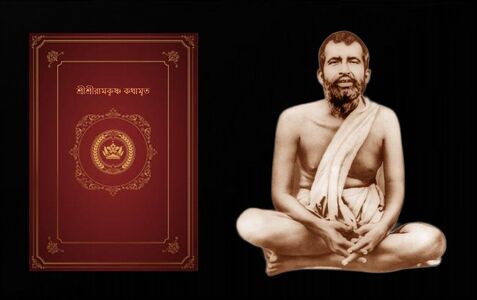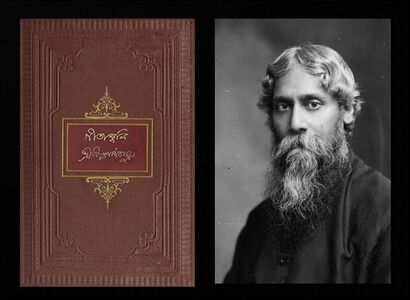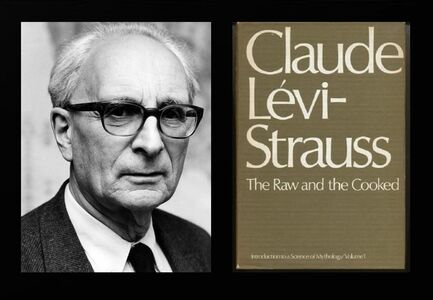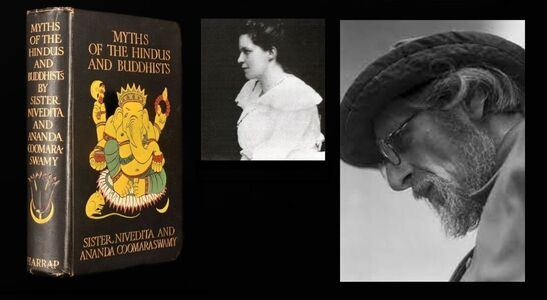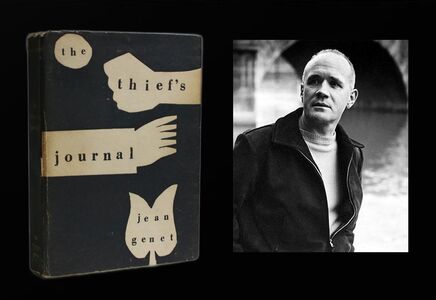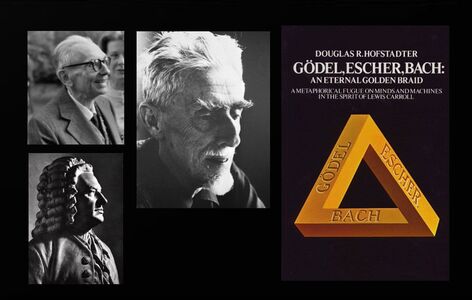My Father was an Antiquarian and had a well-appointed Library. Till the age of five, I thought that God wrote all those books. There were many books which attracted me which were kept in glass cases locked under lock and key. Many a time in the afternoon when my father was taking his siesta I would steal the keys, open the cupboard and take the books to the terrace. There under the water tank, in the quite space look into them with amazement. Thus I got introduced to the Himalayan range from Sven Hedin’s Himalaya much before I visited Darjeeling to have a view of the Kanchananjanga.
As I grew up, I started my own collection of books. I formed bonds with paper characters. I lived love and loss, through stories threaded in history; I experienced adolescence by association. My world is one interwoven web of words, stringing limb to limb, bone to sinew, thoughts and images all together.
My encounters with books, I regard very much as my encounters with phenomena of life or thought. All encounters are configurate, not isolate. In this sense, and in this sense only, books are as much a part of life as trees. I have great reverence for them. I put authors in special, privileged category.
Many of the books guided me through my spiritual development like Ramakrishna’s Katha Mrita or helped me through a difficult time in my life: Savitri by Rishi Aurobindo. Herman Hess’s Narsiss and Golmund has changed my life, and changed me, in countless subtle ways. I first read it at 25. The eternal quest for the Mother Image. My error the first time around was to read Andre Gide’s Symphony Pastoral as one would a typical novel.
In the course of my life I have been influenced by books as diverse and poignant as The Arcadia Project by Walter Benjamin, which helped me to build a Heritage Park to the book The Raw and the Cooked by Claud Levi Strauss. The Myth of Sisyphus by Albert Camus; the Grammatology by Jaquez Derrida and the books in my home library on history, art, architecture, ornithology, music, world religions and metaphysical matters.
I have taken things large and small from each book, and each became as much a part of me as my own life experiences. Some have had great impact on how I have conducted my life or coloured how I look at the world around me and the people I meet. However, there are certain books above all the others that helped form my worldview. They are all a part of who I am, how I feel and think. In the most uninspiring book, you sometimes find a nugget of wisdom that clarifies a moment decades later.
Savitri: A Legend and a Symbol. Rishi Aurobindo.
For me it represent a world view that is in harmony with the most recent understanding of scientific reality. It helped me to come to terms with myself and penetrate to the essential truth. Not only is Savitri a vision for individual and collective self- fulfilment, but, like a mantra it has a directly transformative effect on the inner consciousness. Such a magnificent poem calls for intelligent reflection. It is an epic poem in blank verse by Sri Aurobindo, based upon the theology from the Mahabharata. Its central theme revolves around the transcendence of man as the consummation of terrestrial evolution, and the immergence of an immortal supramental gnostic race upon earth. Unfinished at Sri Aurobindo's death, Savitri approaches 24,000 lines. Savitri is the masterpiece of Sri Aurobindo published in two parts in 1950 and 1951. He revised the book eighteen times before publishing it and it took nearly fifty years for completion. Sri Aurobindo had intended to write a lengthy introduction to Savitri, which never occurred. He did, however, write an author's note which functions as an effective summary that appears at the beginning of the poem in all its published versions.
Kathamrita (Bengali: কথামৃত). Sri Sri Ramakrishna.
The Nectar of Words. Is the gospel of Ramakrishna, the great 19th century Indian Saint shares his profound vision and philosophy of God-Life. Its translation into English is entitled The Gospel of Sri Ramakrishna. The Kathamrita contains the parables and conversations of Ramakrishna. It narrates small events of a great life with parables in simple language narrated to his disciples with such a wealth of intimate detail. Ramakrishna's main teachings included God realization as the supreme goal of life and Harmony of Religions. His teachings included the oneness of existence and the unity and truth of all religions. Ramakrishna noted that God-realisation is the supreme goal of all living beings. Ramakrishna's mystical experiences through different religions led him to teach that various religions are different means to reach absolute knowledge and bliss—and that the different religions cannot express the totality of absolute truth, but can express aspects of it. Sri Ramakrishna exhibits the tremendous spiritual zeal, ingenuity, and adventurous nature of the Upanishadic sages in his life. He, not unlike them, wholeheartedly took upon himself the challenge of inquiry into Reality through one-pointed commitment and dedication, undergoing systematic and logical means of sadhana.
Gitanjali (Bengali: গীতাঞ্জলি) meaning 'Song Offering'. Rabindranath Tagore.
It is a collection of poems. A book which I often go back to. I feel my soul resonate at Tagore’s words that God is all that ever was and will be, that we should notice the sky and the field, and the idea that God lives inside of us. I simply had to seek them out. The day that I first picked up Gitanjali, I had no idea that it would fundamentally change my life. As a teenager, I had so many questions, feelings and beliefs competing for my attention, and I felt broken, alone, if you will. I was adrift, trying to determine why I never found God, when I needed him the most. And then I found solace reading the book. The poems spoke to me in ways I never imagined it could. Tagore’s vision of God’s grace, present even at moments of tragedy or cruelty moved me. The idea of grace that is usually invisible to our judgmental eyes stayed with me and became a touchstones in my life.
The Book of Disquiet. Fernando Pessoa.
It is the fragmentary, the incomplete, and the essence of spirit that made me to realize the solitary. The very kaleidoscope of voices within him, the breadth of culture, the catholicity of my belief from my school days, ironic sympathies… inhibited the monumentalities, the self-satisfaction of completion… Certain sensations are slumbers that fill up our mind like a fog and prevent us from thinking, from acting, from clearly and simply being. As if we hadn’t slept, something of our undreamed dreams lingers in us, and the torpor of the new day’s sun warms the stagnant surface of our senses. We’re drunk on not being anything, and our will is a bucket poured out onto the yard by the listless movement of a passing foot. It is a fragmentary lifetime project, left unedited by the author, who introduced it as a "factless autobiography". Pessoa, was a Portuguese poet, writer, literary critic, translator, publisher and philosopher, described as one of the most significant literary figures of the 20th century and one of the greatest poets in the Portuguese language. He wrote under several heteronym, disguising himself as many personae.
The Arcades Project. Walter Benjamin. Written between 1927 and 1940.
The unfinished project written between 1927 and 1940 is an enormous collection of writings on the city life of Paris in the 19th century, it was especially concerned with the iron-and-glass covered "arcades". Benjamin's Project, which many scholars believe might have become one of the great texts of 20th-century cultural criticism, was never completed due to his suicide on the French-Spanish border in 1940. Parisian arcades began to be constructed around the beginning of the nineteenth century and were sometimes destroyed as a result of renovation of Paris during the Second French Empire (1850–1870). Benjamin linked them to the city's distinctive street life and saw them as providing one of the habitats of the flâneur, a person strolling in a locale to experience it. Benjamin's vision of the Arcades Project grew increasingly ambitious in scope until he perceived it as representing his most important creative accomplishment. On several occasions Benjamin altered his overall scheme of the Arcades Project to make it more explicitly political and Marxist in its analysis It influenced my thinking on the creation of Swabhumi, the first heritage park in India.
The Raw and the Cooked. Claude Lévi-Strauss.
Lévi-Strauss writes of his confidence that "certain categorical opposites drawn from everyday experience with the most basic sorts of things—'raw' and 'cooked can serve a people as conceptual tools for the formation of abstract notions and for combining these into propositions. Beginning with a Bororo myth, Lévi-Strauss analyses myths, reconstructing sociocultural formations using binary oppositions based on sensory qualities. The accepted view held that primitive societies were intellectually unimaginative and temperamentally irrational, basing their approaches to life and religion on the satisfaction of urgent needs for food, clothing and shelter has long been refuted by him. His interpretations of North and South American myths were pivotal in changing Western thinking about so-called primitive societies. A powerful thinker, Lévi-Strauss, in studying the mythologies of primitive tribes, transformed the way the 20th century came to understand civilization itself. Tribal mythologies, he argued, display remarkably subtle systems of logic, showing rational mental qualities as sophisticated as those of Western societies. Lévi-Strauss rejected the idea that differences between societies were of no consequence, but he focused on the common aspects of humanity’s attempts to understand the world. He became the premier representative of “structuralism,” a school of thought in which universal “structures” were believed to underlie all human activity, giving shape to seemingly disparate cultures and creations.
La Symphonie Pastorale. André Gide.
The first time was to read Andre Gide’s Symphony Pastoral as one would a typical novel. But The Symphony isn’t really about plot and dialogue. It’s all about character, as mediated through the wise and compassionate but sharply astute voice of the omniscient narrator. The book shows us that we cannot live without other people, and that we cannot live with other people unless we recognize their flaws and foibles in ourselves. And each of us makes the world a better place by honouring our duties to other people and being humble about our own importance in the grander scheme of things. The story deals with the idea of blindness; although Gertrude is evidently blind physically, the pastor himself is blind to his own morality. The work revolves around the theme, lived on the never resolved tensions between a strict artistic discipline, a puritanical moralism, and the desire for unlimited sensual indulgence and abandonment to life. An artistic and poetic movement style which used symbolic images and indirect suggestion to express mystical ideas, emotions, and states of mind.
Myths of the Hindus & Buddhists. Sister Nivedita and Ananda K. Coomaraswamy.
A Bible to the understanding of Indian Mythology. Gifted to me by my father and passed on to my son. The book narrate myths and stories from ancient Hindu and Buddhist literature. Mythology includes the legends of their history, their religions, their stories of how the world was created, and their heroes. These stories have a great symbolic power, and this may be a major reason why they survive as long as they do, for thousands of years. A detailed work regarding the myths and legends of Hinduism and Buddhism. Stories included are that of, Krishna and Buddha. It can be viewed as a symbol or an allegory. The myths are the cornerstone on which its culture is built. Most cultural activities and beliefs can be traced back to a mythological stories. Myths and legends provide a basis for moral boundaries and establish the basic guidelines for the way people within a society live. The book includes a number of water colour illustrations which were created under the supervision of Abanindranath Tagore. Tagore himself drew some of the pictures in the book.
Don Quixote. Miguel de Cervantes.
Considered a founding work of Western literature, it is often labelled as the first modern novel and one of the greatest works ever written. The story revolves around the adventures of a member of the lowest nobility, a hidalgo from La Mancha named Alonso Quijano, who reads so many chivalric romances that he loses his mind and decides to become a knight-errant to revive chivalry and serve his nation, under the name Don Quixote de la Mancha. In 1569, Cervantes was forced to leave Spain and move to Rome, where he worked in the household of a cardinal. In 1570, he enlisted in a Spanish Navy infantry regiment, and was badly wounded at the Battle of Lepanto in October 1571. He served as a soldier until 1575, when he was captured by Barbary pirates; after five years in captivity, he was ransomed, and returned to Madrid. I think his imprisonment led Cervantes to introspection and to an interest in the workings of minds. His greatest work, Don Quixote deal with a man who has lost his mind. My love for him is his explicit interest in the question of mental illness emerging from the borderline situations he endured as a captive, from the encounter with death that transformed him into a survivor. His reflection on mental illness converts him into a pioneer in the exploration of the psyche three centuries before Freud. Arguably, the writer’s enslavement not only broadened his vision, it broadened the scope of the novel in general. Don Quixote signals the birth of a new era through its incorporation of marginal and culturally ambiguous groups.
The Thief's Journal. Jean Genet.
It is Genet's most authentically biographical novel, personifying his quest for spiritual glory through the pursuit of evil. It is an autobiography that charts the author's progress through Europe in a depoliticized 1930s, wearing nothing but rags and enduring hunger, contempt, fatigue and vice. I got attracted to the book as it proves that genius is not a gift but the way out that one invents in desperate cases. In my life, I have met characters of this nature. The main character encounters bars, dives, flophouses, robbery, prison and expulsion in Spain, Italy, Austria, Czechoslovakia, Poland, Nazi Germany and Belgium. A common theme is the inversion of ideals: betrayal is the ultimate form of devotion, petty delinquency is brazen heroism, and confinement is freedom. Genet's mother was a prostitute who raised him for the first seven months of his life before placing him for adoption. Thereafter Genet was raised in the provincial town of Alligny-en-Morvan in Central France. His foster family was headed by a carpenter and was loving and attentive. While he received excellent grades in school, his childhood involved a series of attempts at running away and incidents of petty theft. After the death of his foster mother, Genet was placed with an elderly couple but remained with them less than two years. He then left and embarked on a life in the underworld. Jean-Paul Sartre wrote a book on Jean Genet, especially on The Thief's Journal titled: Saint Genet, which analysis Genet's psychology and morality.
Gödel, Escher, Bach: an Eternal Golden Braid. Douglas Hofstadter.
By exploring common themes in the lives and works of logician Kurt Gödel, artist M. C. Escher, and composer Johann Sebastian Bach, the book expounds concepts fundamental to mathematics, symmetry, and intelligence. But what first attracted me to the book was the tag line: "A metaphorical fugue on minds and machines in the spirit of Lewis Carroll". The main chapters alternate with dialogues between imaginary characters, used by Lewis Carroll in "What the Tortoise Said to Achilles". These narratives frequently dip into self-reference and metafiction. Word play also features prominently in the work. Puns are occasionally used to connect ideas, such as "the Magnificrab, Indeed" with Bach's Magnificat in D; "SHRDLU, Toy of Man's Designing" with Bach's Jesu, Joy of Man's Desiring; and "Typographical Number Theory", or "TNT", which inevitably reacts explosively when it attempts to make statements about itself. By exploring common themes in the lives and works of logician Kurt Gödel, artist M. C. Escher, and composer Johann Sebastian Bach, the book expounds concepts fundamental to mathematics, symmetry, and intelligence. Through short stories, illustrations, and analysis, the book discusses how systems can acquire meaningful context despite being made of "meaningless" elements. The book is not about the relationships of mathematics, art, and music—but rather about how cognition emerges from hidden neurological mechanisms.
Charitrapuja (চরিত্রপূজা). Rabindranath Tagore.
A book that has influenced me greatly. It was our Text Book in Senior Cambridge where we studied English as First Language and Bengali as Second but the curriculum was of that of Bengali First Language. A very tough book then to wade through. It is Tagore’s impression of three very important characters in his life. The Educationist and Social Worker Vidyasagar, the giant of a Reformist Raja Rammohan and his father Debandranath Tagore, It is partly autobiographical and partly his impression. The best is his impression of Vidyasagar. In a fiercely self-critical vein, Tagore observes how dissimilar Vidyasagar, the educationist and reformer, was compared to his contemporaries. The average Bengali exhibited a lot of faith, Tagore argued, but not the will to make this actionable, he fussed over work without performing much work. The average Bengali took pride in emulating his English superiors, delighted to be patronisingly acknowledged by them but, above all, thrilled by his own cleverness with the use of vacuous words. Vidyasagar, in Tagore’s perception, was the living antonym of all these traits. A self-made man who grew in stature through sheer diligence and determination, a man for whom yatna (effort) and unnati (progress) remained the keywords and made up his moral and pedagogic code, but more tellingly, he was a man for whom self-respect and self-determination gave vital meaning to human life.



